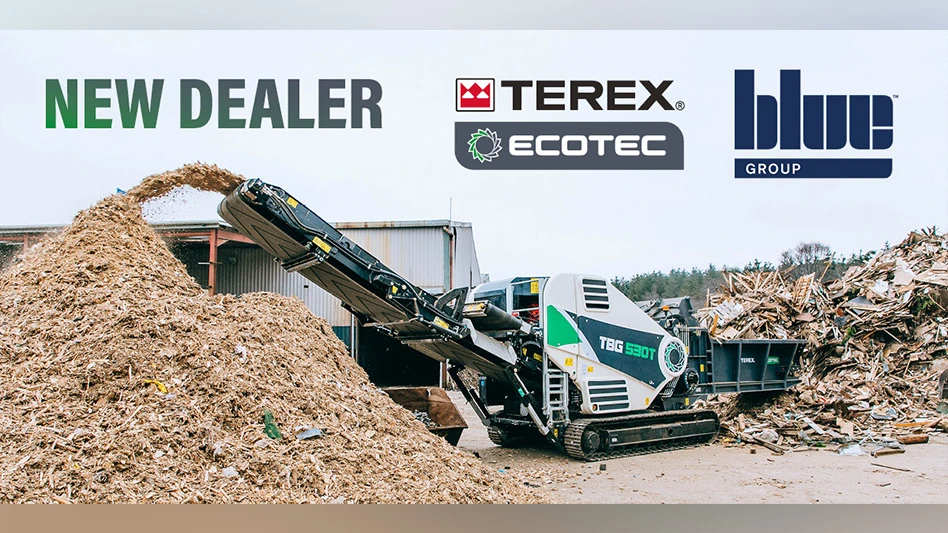
Logo courtesy of the Recycled Materials Association
One of the most common themes at this year’s Recycled Materials Association (ReMA) Convention & Exposition, May 12-15 in San Diego, was the role the recycled materials sector plays in strengthening American manufacturing.
During the May 14 session, A Conversation Between Manufacturing and Recycled Materials, moderated by ReMA President Robin Weiner and featuring National Association of Manufacturers (NAM) President and CEO Jay Timmons, the discussion focused on strategies to strengthen America’s manufacturing base— emphasizing tax and trade policy, workforce development and regulatory reform.
The centerpiece of the discussion, however, was how the recycled materials industry is helping to drive sustainability, innovation and nation’s economic resilience.
Manufacturing: A U.S. superpower
Timmons wasted no time in comparing America’s manufacturers to superheroes.
Speaking to a packed room, he reminded audience members that their work—whether in steel, plastics, electronics or paper—is helping ensure the nation’s competitiveness on the global stage.
“Your power is real. You build, you recycle, you renew and [you’re shaping] a more sustainable, more secure and more competitive America,” he said, adding that his grandfather worked at a paper mill in Ohio. “I’ve always understood the importance of recycling and sustainability.”
When recycling and sustainability win, manufacturing wins, he added. “And when manufacturing wins, America wins.”
A multipronged strategy for national manufacturing strength
NAM’s vision to solidify the nation’s position as a global manufacturing leader, he continued, involves a five-pronged approach.
The critical topics that must be addressed, Timmons noted, include making the 2017 tax cuts permanent, accelerating and streamlining all forms of U.S. energy production, enacting smart trade policy, strengthening workforce development and streamlining regulatory processes.
“Those five pieces taken together will secure a new generation of prosperity for manufacturers and for all Americans,” he said.
The 2017 tax cuts achieved in President Trump’s first term were his signature achievement, Timmons said, noting that when the measure was signed into law, manufacturing surged and job creation hit a 21-year high.
Letting key provisions of that law expire, Timmons explained, could cost the U.S. 6 million jobs— including 1.1 million in the manufacturing sector alone.
“Every day that Congress delays because of process or politics, manufacturers face rising uncertainty, delayed investments and fewer jobs,” he said.
But the other pillars carry equal weight.
Regulatory reform, he noted, must aim to cut costs without sacrificing safety or progress, especially because manufacturers are spending millions of dollars each year to comply with various regulations.
For example, cutting overlapping permitting requirements by state and federal agencies—such as the Environmental Protection Agency (EPA), the Occupational Safety and Health Administration (OSHA) and state environmental agencies—could save the U.S. manufacturing sector millions, if not billions, of dollars, Timmons said.
These types of expenditures cost small manufacturers about $50,000 per employee per year, he explained, adding that this is money that could be spent on expanding factories and production lines.
On energy, Timmons said NAM is pushing for reforms to accelerate project permitting—which, in some cases, can take 80 percent longer than it does in other advanced nations—and unlock the U.S.’ full energy potential.
“That’s 80 percent more time. That’s more cost, that’s more uncertainty— that’s unacceptable. America should be the global leader in energy production and innovation,” he said.
Shifting to trade policy, Timmons noted that legislators must deliver policies that promote long-term certainty, level the playing field and support American manufacturing jobs. These policies also must be designed to make it easier—not harder—for manufacturers to build things in America.
“If we have trade policy that [provides U.S. manufacturers] the ability to import the critical inputs we need to do what we do best, then the United States is going to have a true Independence Day to celebrate on July 4th.”
In terms of addressing workforce challenges, Timmons further called for bold investment in skills training and immigration reform to fill the industry’s 500,000 monthly job openings.
“When we can’t find and retain the right talent, we can’t invest, we can’t grow and we can’t compete,” he said.
These five pillars are the foundation of U.S. manufacturing’s future, Timmons added.
Advocacy through storytelling
Timmons explained that while emphasizing data and statistics is important, personal stories are more likely to move policymakers. He also encouraged industry members to share real-world examples with their elected officials to help humanize how manufacturing policies affect real American lives.
One of the best narratives he’d ever seen, Timmons continued, was when he learned about a NAM member who had an engineer whose college education had been paid for by the company.
That engineer, named Corey, shared the story about how that job not only saved his family but also allowed him to buy a house for the first time.
“We took him to the White House [during Trump’s first administration] to meet the president, and the next thing we know, Corey is up on the balcony at the State of the Union Address,” he said. Sharing such stories “sounds really simple, but it’s the face of the manufacturing sector,” Timmons continued. “It’s the face of the people you’re giving opportunities to.”
Educating legislators about—and introducing them to—the human face of manufacturing, he stressed, is one of the most persuasive tools that can be used to shape policy outcomes, promote tax incentives and underscore the importance of workforce development.
A call to action
At the close of the session, Timmons issued a clear and urgent call to action. The future of American manufacturing—and the recycled materials industry that fuels it—he said, depends on persistent, proactive advocacy.
He once again urged industry members to engage directly with members of Congress, regardless of their political affiliation, to speak about how tax, trade, workforce and regulatory policies affect their businesses.
“How many of you [have or] know someone who has conversations with either your congressman or senators? I hope the next time we’re together, I see every hand go up,” Timmons said. “They don’t have that [legislative and policy] ammunition unless you give it to him, and the ammunition is the real-life stories you carry with you every single day.”
Latest from Recycling Today
- China to introduce steel export quotas
- Thyssenkrupp idles capacity in Europe
- Phoenix Technologies closes Ohio rPET facility
- EPA selects 2 governments in Pennsylvania to receive recycling, waste grants
- NWRA Florida Chapter announces 2025 Legislative Champion Awards
- Goldman Sachs Research: Copper prices to decline in 2026
- Tomra opens London RVM showroom
- Ball Corp. makes European investment





